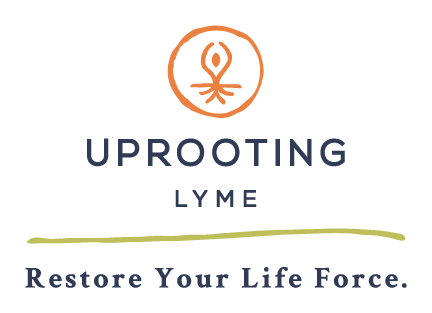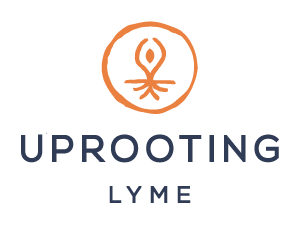
Creating Self-Care Rituals
By Daisha Sen, NTP, CWHC
Where do you fit moments for self-care into your daily routine?
Or perhaps caring for your personal health and wellbeing falls by the wayside, because of prioritizing other people, and other life needs instead? If so, you’re not alone. This article will explore self care – what it is, why it’s a crucial part of a healthy life, and how to strengthen your self-care muscles.
It has been defined in different ways. The Global Self-Care Federation describes it as “the practice of individuals looking after their own health using the knowledge and information available to them…a decision-making process that empowers individuals to look after their own health efficiently and conveniently, in collaboration with health and social care professionals as needed.” (1)
Adrienne Maree Brown writes about a self-determined care that is integral to the overall health of a community. She explains that valuing your own health isn’t actually separate from valuing the health of your community.(2) Unfortunately, prioritizing self-care can sometimes feel self-indulgent, inconvenient, too complicated, or simply out of reach. Each of us has to navigate this relationship with ourselves. I’ve found this to be a life-long learning experience!
Similar to other self-care stories I’ve heard, my own experience of finally prioritizing my health and wellbeing began with becoming so unwell, that I was forced to face it.
That winter I became overwhelmed with indoor airborne allergies. This overlapped with repeatedly catching colds from my co-workers, which continued in a vicious cycle for months. I was very privileged to know an acupuncturist who offered his services, and supported me in bringing my immune system back into balance.
I also began to observe that certain dietary factors were contributing to my body’s imbalance. While this was an intensive learning experience, it was not the only one I’ve had. Being reminded to prioritize my health has sometimes happened because of circumstances that were out of my control, and sometimes due to my own neglect. Whether experiencing physical and mental trauma from a head-on collision, or allowing mental and emotional stress to build up beyond my limits, being aware of the need to value my health can be a process.
I’ve learned that having simple steps to gradually integrate into my daily routine can not only support a health need, but also lay some groundwork for learning what else might be helpful. My hope in sharing some here, is to offer space and fodder for your own inner dialogue about how you care for your wellbeing, your physical, mental and emotional health, and what might help support your needs.
Photo by Jeremy Bishop on Unsplash
Gratitude for Breath
On the subject of mindful breathing, Thich Nhat Hanh said, “in our daily life our mind and our body are rarely together. Our body might be there, but our mind is somewhere else.” He spoke of the breath as a way to “bridge” this disconnect, explaining that spending just ten to twenty seconds with our focus on breathing in and out can bring us into the present moment, “this miracle of oneness,” as he put it. (3)
The respiratory tract is an important pathway for detoxification within the body. It is integral to immune and organ function. It brings oxygen to our cells, while facilitating the release of carbon dioxide. Each breath taken in and pushed back out provides so much to be grateful for. Research has shown that deep breathing supports the management of daily stress. (4) It engages the parasympathetic nervous system, the part of our nervous system which supports digestion and rest.
Our bodies can become overly engaged with the sympathetic nervous system, due to chronic stress. Any tools we can use to support the engagement of the parasympathetic state which is sometimes referred to as ‘rest and digest,’ are helpful for our overall functioning. While our cortisol production can be knocked out of balance when we experience chronic stress, both deep breathing and gratitude can help to regulate it.
As someone who lives with chronic pain, I understand the importance of acknowledging difficult emotions, and I appreciate the equally important need to find simple things to feel grateful for. The power of breath is one of those things.
And what’s more: BREATHING IS FREE!
A Simple Step to Try:
Begin Your Day with Three Deep Breaths.
You can do this to a count of
10 in through your nose
– pause –
Release through your mouth to a count of 10
(If 10 is too much to start with, try a count of 5, and work up from there. You can continue this for as many breaths as you feel like. You can also try check-ins throughout the day)
Whether you see this as engaging your parasympathetic nervous system or aligning your body and mind in the present moment (“oneness”), it’s an empowering way to start the day. I like to do this with my morning tea, and/or just before eating my first food of the day.
You can click here to explore breathing a little further with Harvard Medical School.
Nourishing Our Bodies
We need nourishment to keep our bodies alive. We do this by consuming nutrients. Macronutrients, which come in the form of carbohydrates, proteins, and fats (lipids) provide fuel and important building blocks for our bodies’ functional and structural needs. Micronutrients come in the form of vitamins and minerals, which work to support many essential functions and processes within the body.
While water is not usually thought of as a nutrient, it is vital to our survival and ability to properly absorb other nutrients, to breathe, regulate body temperature, and so much more.
When we consume a balanced combination of water, and foods containing macronutrients, and micronutrients in as close to their whole forms as possible, we support our body’s systems to process and absorb what they need, while eliminating what they don’t need without becoming overtaxed.
Water, that vital nutrient, comprises 55-60% of the body’s mass. In addition to the roles mentioned above, it also improves oxygen delivery to cells, prevents tissues from sticking, enables the digestive process, and flushes toxins from the body. Water cushions our bones and joints, lubricates the joints, absorbs shocks to the joints and organs, and empowers the body’s natural healing process.
Our bodies depend on having a balance of electrolytes (minerals) in order to function, down to the cellular level. When we drink water containing these essential minerals, it facilitates cells in retaining some of that hydration, and in their absorption of necessary nutrients. Our digestive tract especially needs enough hydration to properly absorb nutrients and expel toxins.
Photo by Aaron Burden on Unsplash
A Few Simple Steps to Support Hydration:
- Before meals –
Drink at least 8oz warm water w/lemon or miso (to taste)
This helps to prepare the digestive tract for digestion
- Add a pinch of sea salt to warm or room temperature water
Supports electrolyte balance
- Prepare a Saturated Sea Salt Solution – recipe found here
Supports cellular rehydration
Letting go
Stress is a necessary function of life, for survival, transformation, growth. It can keep us alert when we need to be. It can trigger a fight, freeze, or flight response to danger. Stress can inspire and motivate needed change. When it becomes a constant or nearly constant state, the body’s signaling, energy levels, and basic functions all become imbalanced to one degree or another.
The process of letting go of the day, the week, a moment or series of moments that just won’t stop repeating a pattern in the brain can be challenging. When the nervous and endocrine systems are overloaded from chronic stress, they and other systems of the body can be knocked far enough out of homeostatic balance that navigating back to balance can feel daunting.
Flipping the switch from survival mode to rest and digest can seem out of reach. Having a way to access this parasympathetic state where the body can repair and perform its basic functions without rerouting most of its energy to alarm mode, can become an integral part of the daily routine.
Most people have experienced the stress-relieving power of laughter. Research backs this up. (5) Mindfulness Meditation is known to support healthier brain patterns, especially in relation to stress. The more often we’re able to be mindful and present, the more organic it can be to access this awareness. It can also support our ability to observe what feels nourishing and what does not. And of course, the breath is a simple and powerful tool in the process of letting go.
The Heart Math Institute, a nonprofit organization, studies the connection between the heart and the brain. They work to highlight the heart’s function as an organ of perception and its influential communications with the brain, and rest of the body. They offer education and tools to support people in bringing this line of communication into coherence. Last, but not least, they explain that while coherence does involve the parasympathetic part of the nervous system, it differs from relaxation in being more actively engaged, focused, and energized. (6)
A Few Simple Ways to Begin Releasing Stress:
· HeartMath’s Quick Coherence Technique
in both audio & visual slides
· Take a Moment to Check-in
with your breath, scanning your body, and allowing yourself to feel through your physical sensations.
(It can be helpful to find a calm part of the body that feels safe and warm, where you can bring your attention to if/when other sensations become more intense than you’re ready for)
· Watch, Read, or Engage in Humor
What makes you laugh?
While self-care might often be seen as taking a whole or half-day of rest, or giving yourself a footbath, we can also take small, simple steps to care for our own health and well-being in any given moment. This can be as easy as beginning the day with a few deep breaths, and having a little lemon or a pinch of salt in water to support your hydration. It can look like engaging with something or someone that helps you laugh. It can be as simple as coming back to those deep breaths at the end of the day to aid your mind and body in letting go of stress that’s gathered.
Integrating Moments of Self-Care into Your Day:
What is at least one self-care ritual you already find time for? This could be sitting for a moment and sipping your beverage of choice, something that you enjoy. It could be going for a walk, or relaxing with loved ones. Whatever it looks like for you, how does it feel? This feeling can be helpful to call on in your memory, whenever it feels useful.
What is at least one ritual you’d like to start? What need does it meet/support? How strongly can you feel that need?
What’s a barrier you might face in beginning this ritual? How have you moved through barriers like this in the past?
What can support you in taking this step to support your own health and wellbeing? Where will you begin?
Photo by Will Walker on Unsplash
Works Cited
1. Federation, Global Self-Care. https://www.selfcarefederation.org. [Online] https://www.selfcarefederation.org/what-is-self-care.
2. Brown, Adrienne Maree. https://adriennemareebrown.net. [Online] October 15, 2012. https://adriennemareebrown.net/tag/self-care/.
3. Hanh, Thich Nhat. True Love: A Practice for Awakening the Heart. Boston : Shambala Publications, Inc, 2004.
4. Valentina Perciavalle 1, Marta Blandini 2 , Paola Fecarotta 3 , Andrea Buscemi 2 , Donatella Di Corrado 4 , Luana Bertolo 2 , Fulvia Fichera 2 , Marinella Coco 5. National Library of Medicine National Center for Biotechnology Information. PubMed.gov. [Online] December 19, 2016. https://pubmed.ncbi.nlm.nih.gov/27995346/.
5. Thea Zander-Schellenberg, Isabella Mutschler Collins, Marcel Miché, Camille Guttmann, Roselind Lieb, Karina Wahl. Does laughing have a stress-buffering effect in daily life? An intensive longitudinal study. https://journals.plos.org/. [Online] Public Library of Science, July 2020. https://journals.plos.org/plosone/article?id=10.1371/journal.pone.0235851.
6. HeartMath Institute . heartmath.org. [Online] https://www.heartmath.https://www.heartmath.org/science/.






Lovely blog!! Ritual is such a nice word. Much nicer than habit. Practice also isn’t as nice as ritual. Ritual has a much deeper connotation. All the suggestions here are beautiful and some of which I practice. One of my other rituals is Qi Gong. It offers me both peace and energy support for my body. Also, I practice and I teach people how to actually let go. Have been doing this for many years. It’s easy once we know how. It’s not a conceptual thing. It’s a skill. It’s not a mind game. It’s an activity that we already do all day unconsciously but have no idea how to implement consciously throughout the day. The remarkable thing about learning how to let go, to actually let go, is that it not only brings peace of mind and supports health and healing, it dissolves old patterns of thinking that work at cross purposes of our goals. And it actually makes taking action steps towards our goals much easier. This includes health goals but relationship goals, professional goals, spiritual goals etc.